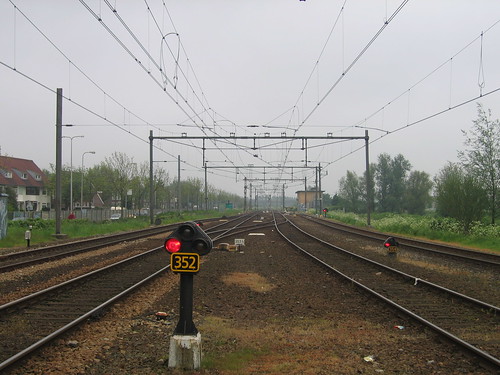Mr. O’Toole a tool for Big Oil? – Cato Institute scholar O’Toole opines that trains Are For Tourists
(Source: NPR; Photo Courtesy: Hans Splinter@ Flickr)
NPR.org, March 19, 2009 – When I went to Europe, I loved to ride the trains, especially the French TGV and other high-speed trains. So President Obama’s goal of building high-speed rail in the United States sounded good at first.

Randal O'Toole is a Cato Institute Senior Fellow working on urban growth, public land and transportation issues. Courtesy of the Cato Institute
But when I looked at the details, I discovered that — while high-speed rail may be good for tourists — it isn’t working very well in Europe or Japan.
Japan and France have each spent as much per capita on high-speed rail as we spent on our Interstate Highway System. The average American travels 4,000 miles and ships 2,000 ton-miles per year on the interstates. Yet the average resident of Japan travels only 400 miles per year on bullet trains, while the average resident of France goes less than 300 miles per year on the TGV — and these rail lines carry virtually no freight.
Click here to read the entire “Opinion” of Mr. O’ Toole.
Throughout the world and throughout history, passenger trains have been used mainly by a wealthy elite and have never given the average people of any nation as much mobility as our interstate highways.
NOTE: TransportGooru disagrees with the author at many levels, especially on the above quoted paragraph lifted directly from Mr. O’Toole’s article. Mr. O’ Toole forgets the very fact that Railways are in deed the lifeline for many countries in the developing world. Heck, nearly half of the world’s population now resides in India (Population: 1.4 Billion and China (Population: 1.6 Billion) are two good examples of how emerging economies help their citizens move around the country without having to own a private automobile. If anything, remote regions such as China’s Tibet and India’s Kashmir valley are now connected to the mainland by trains, making it easy for people who make less than $1 per day to move across the country. Hope Mr. O’ Toole would realize that railways have in deed given the average people of India and China as much mobility as the American people enjoy from their interstate highways.
Dictionary.com Reference: [tool]  Show IPA ,
Show IPA ,
| Tool – a person manipulated by another for the latter’s own ends; cat’s-paw. |
